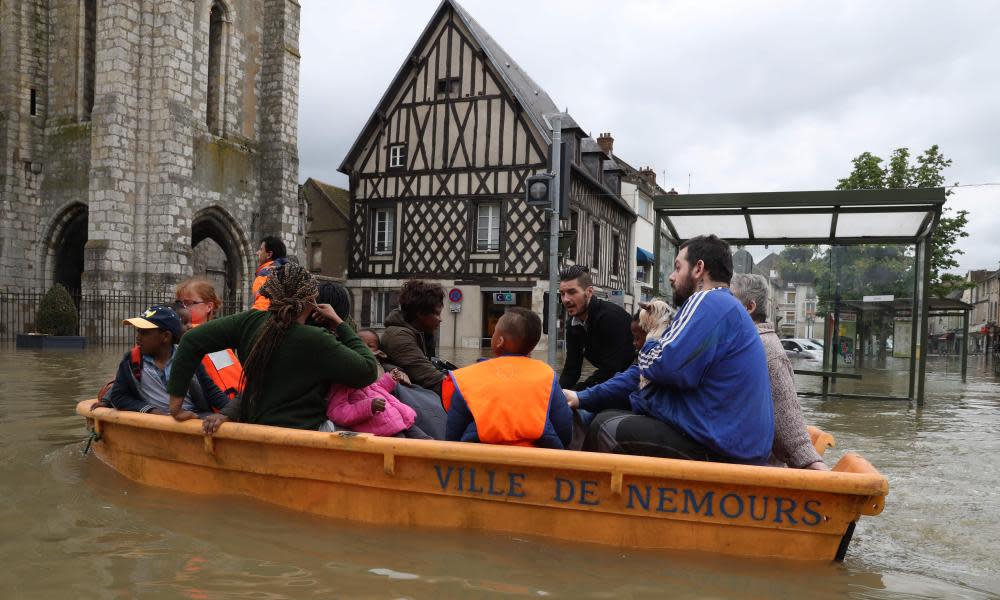Climate change 'will push European cities towards breaking point'

Major British towns and cities, including Glasgow, Wrexham, Aberdeen and Chester, could be much more severely affected by climate change than previously thought, according to new research.
The study, by Newcastle University, analysed changes in flooding, droughts and heatwaves for every European city using all climate models.
Looking at the impact by the year 2050-2100, the team produced results for three possible outcomes – low, medium and high-impact scenarios.
But even the most optimistic case showed 85% of UK cities with a river, including London, would face increased flooding.
In the high-impact scenario, some cities and towns in the UK and Ireland could see the amount of water per flood as much as double. The worst affected is Cork, which could see 115% more water per flooding, while Wrexham, Carlisle, Glasgow, and Chester could all see increases of more than 75%.
The increase in severity in the predicted impact has come after the team, in a first of its kind, examined all three climate hazards together in the largest study of its kind ever undertaken.
After around three years of analysing the information across hundreds of cities in Europe, they found every outcome was worse than previously thought.
Wrexham, Carlisle, Glasgow, Aberdeen, Derry and Chester were the worst-hit UK towns and cities for river flooding, with Dublin, Cork and Waterford the worst in Ireland.
All 571 cities studied saw a worsening in heatwaves and the high-impact scenario predicted southern Europe experiencing droughts 14 times worse than today.
The lead author, Selma Guerreiro, said: “Although southern European regions are adapted to cope with droughts, this level of change could be beyond breaking point.
“Furthermore, most cities have considerable changes in more than one hazard, which highlights the substantial challenge cities face in managing climate risks.”
While southern European cities saw the biggest increase in the number of heatwave days, central European cities saw the greatest increase in temperature during heatwaves – ranging between 2C to 7C for the low scenario and 8C to 14C for the high scenario.
A co-author, Prof Richard Dawson, said: “The research highlights the urgent need to design and adapt our cities to cope with these future conditions.

“We are already seeing at first hand the implications of extreme weather events in our capital cities.
“In Paris, the Seine rose more than four metres above its normal water level. And as Cape Town prepares for its taps to run dry, this analysis highlights that such climate events are feasible in European cities too.”
Published in the journal Environmental Research Letters, the research found the European capitals worst hit by flooding would be Dublin, Helsinki, Riga, Vilnius and Zagreb.
Under the high-impact scenario, several European cities saw more than 80% increases on peak river flows.
Stockholm and Rome could see the greatest increase in number of heatwave days, while Prague and Vienna could see the greatest increase in maximum temperatures during heatwaves.
Lisbon and Madrid are in the top capital cities for increases in frequency and magnitude of droughts, while Athens, Nicosia, Valletta and Sofia might experience the worst increases in both drought and heatwaves.
Next month the United Nation’s Intergovernmental Panel on Climate Change is holding its first cities and climate change science conference, after recognising the important role cites must play in tackling climate change.
Over 75% of the population of the EU currently lives in urban areas, and this percentage is expected to grow to 82% by 2050.
And already the impact is being felt, as between 1998-2009 floods in Europe caused 1,126 deaths and at least €52bn in insured economic losses.
Dawson, who sits on the scientific steering committee for the conference, said: “A key objective for this conference is to bring together and catalyse action from researchers, policymakers and industry to address the urgent issue of preparing our cities, their population, buildings and infrastructure for climate change.”
The team used projections from all available models associated with the high emission scenario RCP8.5, which implies a 2.6C to 4.8C increase in global temperature.
They found the British Isles have some of the worst overall flood projections, with the high scenario predicting half of UK cities could see at least a 50% increase on peak river flows.

 Yahoo News
Yahoo News 
